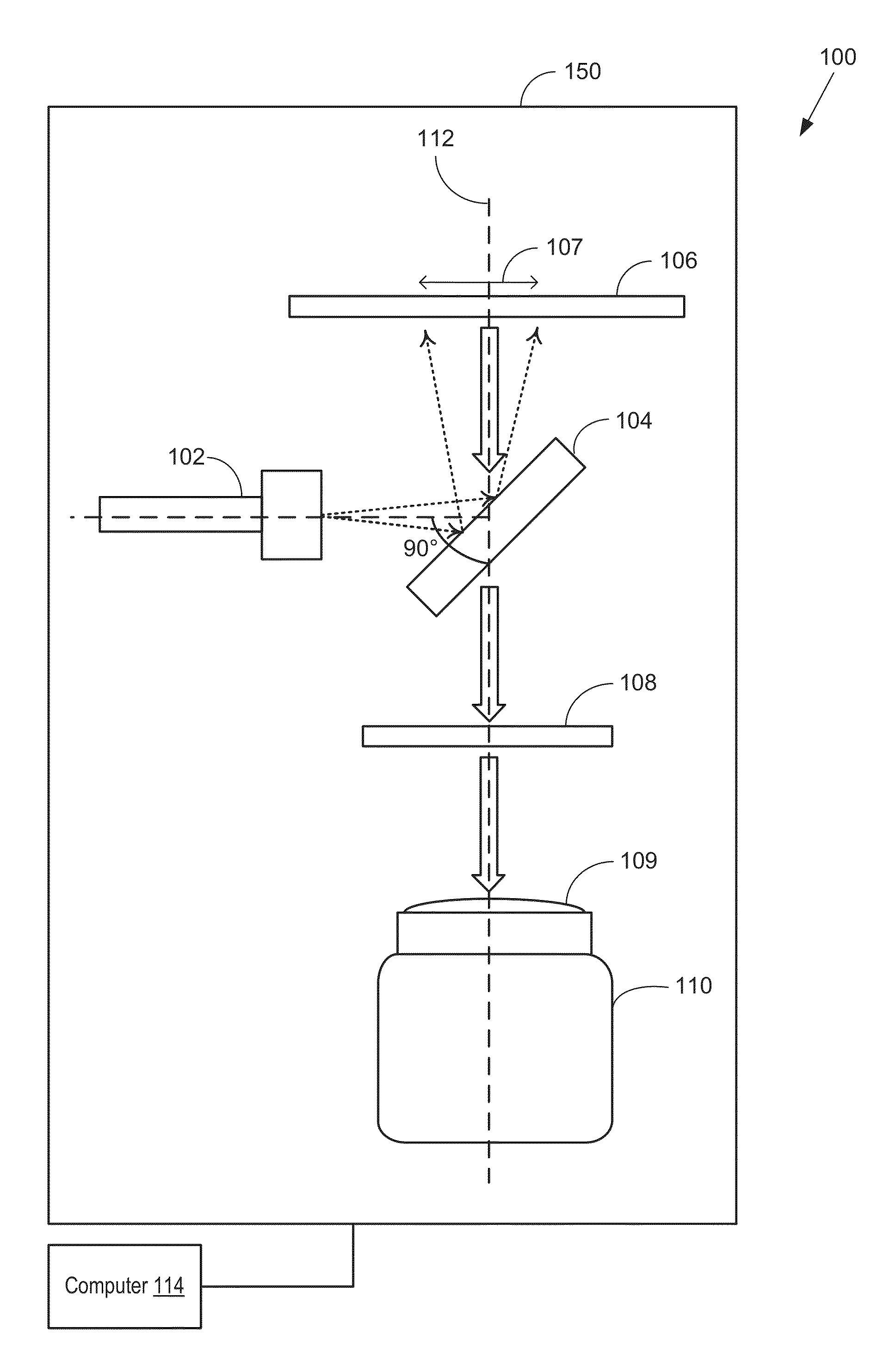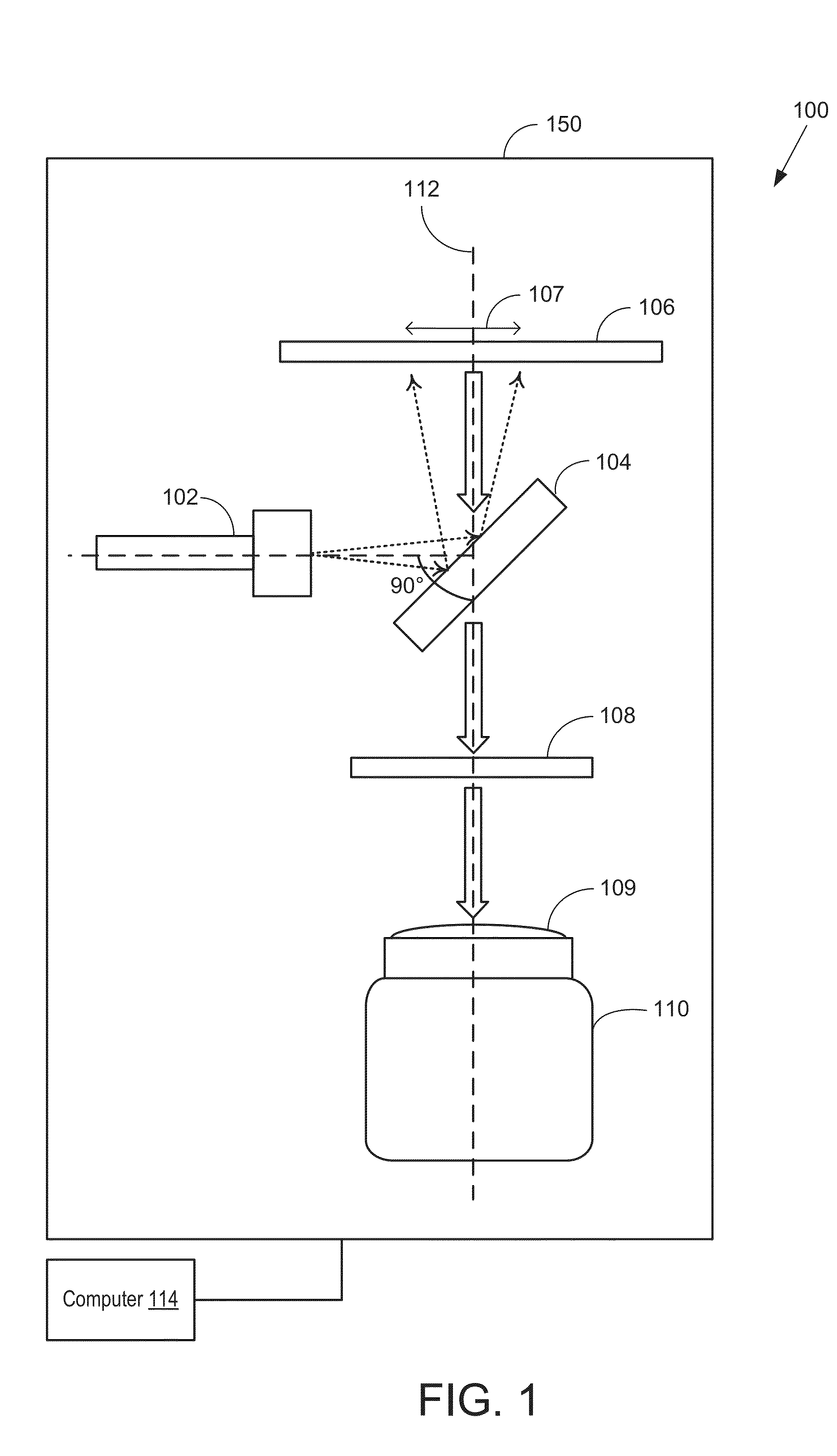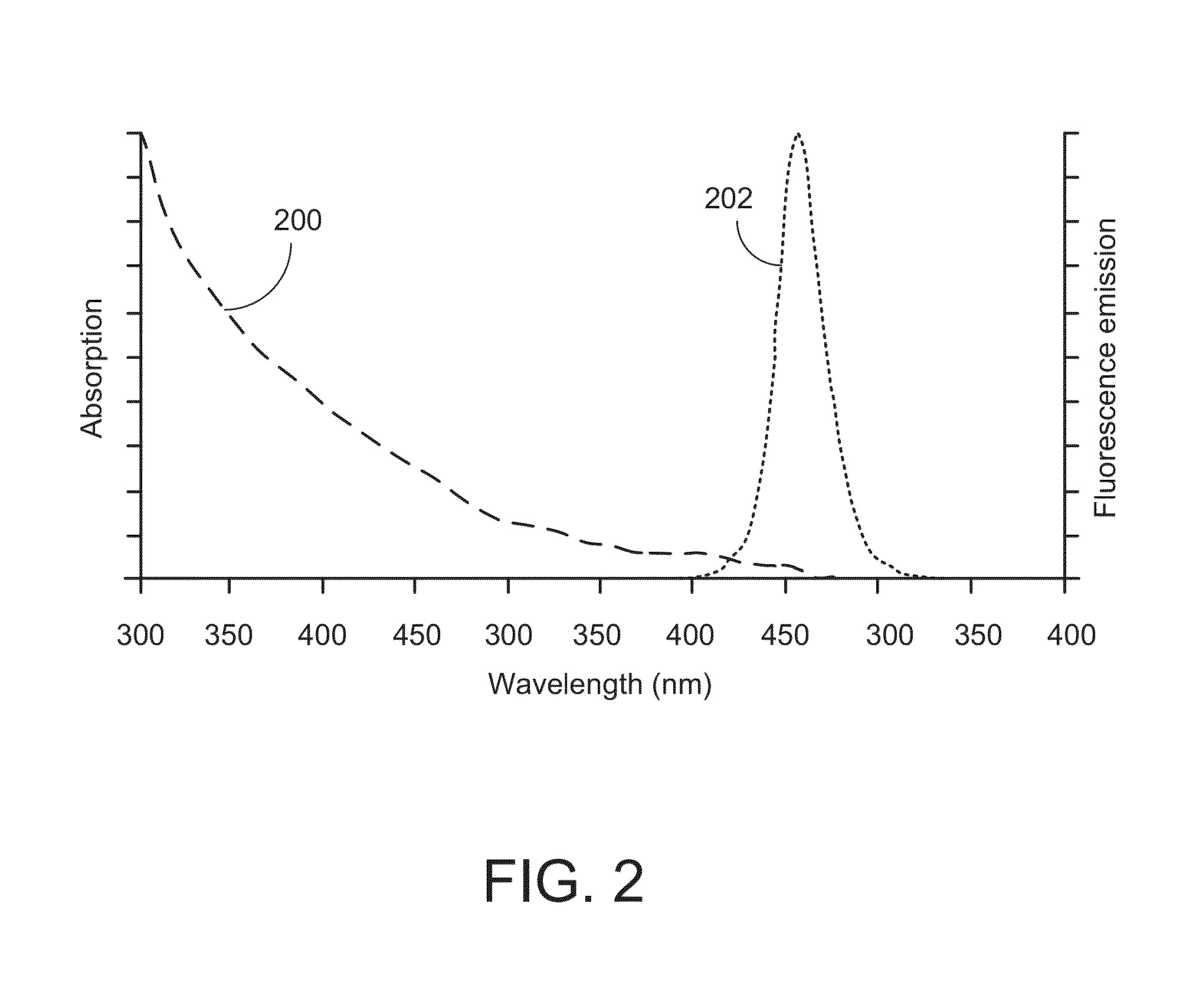Protein microarray assay imager
a protein microarray and imager technology, applied in the direction of material analysis using wave/particle radiation, fluorescence/phosphorescence, instruments, etc., can solve the problems of inability to adjust the settings of instruments to optimize, the best performing instruments are expensive, and the device is bulky and not easily accessible to remote handling, etc., to achieve high-performance microarray scanning, reduce capital investment, and increase protein binding capacity
- Summary
- Abstract
- Description
- Claims
- Application Information
AI Technical Summary
Benefits of technology
Problems solved by technology
Method used
Image
Examples
embodiment 600
[0162]The imager of the present disclosure may adopt several configurations and component arrangements. An example detailed embodiment 600 of an imager (such as the imager of FIG. 1) suited for single-side imaging is shown in FIG. 6. The configuration of the imager of FIG. 6 matches the configuration shown schematically in FIG. 1 in orientation and component alignment.
[0163]Imager 600 includes a frame 605 to which the various optical components are coupled. The components may be arranged at various levels or stacks. Each level arranged perpendicular to a longitudinal axis of frame 605. In one example, frame 605 may be sized to fit imager 600 is a standard imaging chamber. Frame 605 includes vertically arranged supporting rods 625a-b connected via cross beam 626. While the depicted example shows two supporting rods (a distal rod 625b and a proximal rod 625a), any number of supporting rods may be present. In one example, cross beam 626 may be coupled to the supporting rods at a mid-he...
second embodiment
[0183]In the imaging device pictured in FIG. 7, the acquisition head 706 may be attached to a mounting frame 715. The mounting frame may comprise two upright arms 716. The upright arms may provide a vertical point to affix components of the imagine device. Spanning the upright arms 716 may be a horizontal cross beam 717. The horizontal cross beam 717 may be attached on to the upright arms 716 by fasteners 721. In alternate embodiments, a mounting frame may comprise a single integrated component, for example a molded mounting frame.
[0184]The frame may be further bolted within an enclosure or housing (not shown). Attachment points on the base 720 of the mounting frame may be used to attach or secure the mounting frame, and components of the imaging device therein to an external housing. In one example, the base may comprise a metallic plate with regularly spaced threaded holes. The threaded holes suitable for attaching the upright arms 716, or for attaching a base 720 of the mounting ...
PUM
| Property | Measurement | Unit |
|---|---|---|
| thick | aaaaa | aaaaa |
| thick | aaaaa | aaaaa |
| thick | aaaaa | aaaaa |
Abstract
Description
Claims
Application Information
 Login to View More
Login to View More - R&D
- Intellectual Property
- Life Sciences
- Materials
- Tech Scout
- Unparalleled Data Quality
- Higher Quality Content
- 60% Fewer Hallucinations
Browse by: Latest US Patents, China's latest patents, Technical Efficacy Thesaurus, Application Domain, Technology Topic, Popular Technical Reports.
© 2025 PatSnap. All rights reserved.Legal|Privacy policy|Modern Slavery Act Transparency Statement|Sitemap|About US| Contact US: help@patsnap.com



